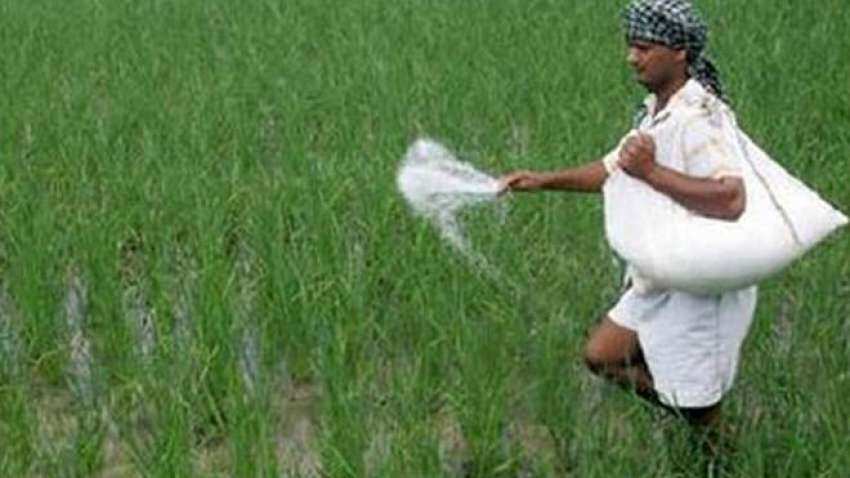COVID-19 wave not to impact India's agri sector in any way: Niti Aayog By Bijay Kumar Singh
Niti Aayog Member (Agriculture) Ramesh Chand on Sunday said the second COVID-19 wave will not impact the Indian agriculture sector in anyway as rural areas saw spread of infections in May when agriculture activities remained at bare minimum

Niti Aayog Member (Agriculture) Ramesh Chand on Sunday said the second COVID-19 wave will not impact the Indian agriculture sector in anyway as rural areas saw spread of infections in May when agriculture activities remained at bare minimum.
In an interview with PTI, Chand said that India's policies on subsidy, price and technology have remained too much in favour of rice, wheat and sugarcane, and there is need to make the procurement and minimum support price policy favourable to pulses.
See Zee Business Live TV Streaming Below:
"COVID-19 cases started spreading in the rural areas in the month of May, with the beginning of the month of May, and agriculture activity in the month of May is bare minimal, particularly land-based activities," he added.
"...It (May) is a peak summer month and no crop is sown, no crop is harvested except little bit vegetables and some off-season crops," Chand further explained.
Agriculture activity, Chand said, peaks in the month of March or till middle of April, after that it comes down significantly and again peaks with the arrival of monsoon.
"So even if less availability of labour is there in the month of May till mid-June, I don't think that will impact agriculture in anyway," Chand said.
He pointed out that labour force is moving to rural areas as there has been a lot of increase in COVID-19 cases in urban areas and these labourers are willing to work in the agriculture sector for livelihood.
"From the output side, you look at agriculture market data. Market for agriculture (is) just working normally everywhere," he argued.
The Niti Aayog member noted that income from the agriculture sector, which is a major source of earning for rural people, is intact.
"So that large segment of rural income, ...It is remaining intact and rural demand on that count will not be affected," he opined.
Chand added that only in case of some services which are not working in rural area, there is an issue.
"I would say that the government should keep its emphasis on MGNREGA," Chand suggested.
The Niti Aayog member, however, admitted that remittance from urban areas that has been going to rural areas and aiding rural demand will fall.
On being asked why India is not self-sufficient in pulses production, he said there is need to increase pulses area under irrigation and that will make a lot of difference in production and stability in prices.
He added that "in India, our subsidy policy, our price policy, technology policy, have remained too much in favour of rice and wheat and sugarcane. So I strongly believe that along with the technological breakthrough, we need to make our procurement, our MSP favourable for pulses".
Chand pointed out that pulses are not like edible oil that can be imported in big quantity from outside the country as pulses are available in international markets in small quantities.
Asked whether the government was considering reduction in import duty of edible oils, he said the main reason for the increase in edible oils prices is the rise in international rates and it's not that India's output is low.
"I feel that if prices (of edible oils) do not come under control then the government has a lot of cushion and that cushion is that duty rate on import should be reduced," Chand said.
The Niti Aayog member pointed out that whenever price of a commodity rises, then the government reduces import duty on that commodity and when price falls then it increases import duty.
In this year's budget, the government has put this big surcharge which raised duty on oilseeds to a very high level, he said adding that many people look at only import duty but they are not looking at effective duty.
"So though, import duty on edible oils, you will find is low, in some cases it is 10 per cent, and in some cases it is 15 per cent. But there is another 15 per cent kind of thing as a surcharge which raised the effective duty, which I would say is high in the present circumstances," Chand observed.
The Niti Aayog member asserted India or any other country for price stabilisation follows duty policy that is counter cyclical.
"So, since international prices (of edible oils) are rising...Then without affecting our farmers you can ensure that when imports land in India, they do not land at cheaper rates...
"...Therefore there is a scope for the government that even if they lower the duty, the landed price is not lower because international prices are high," he argued.
As per the government data, the retail prices of edible oils have risen by more than 60 per cent in over a year and are adding to the woes of consumers, who are already reeling under the economic distress induced by the COVID-19 pandemic.
India meets 60 per cent of edible oil demand through imports.
To a question on farm sector growth, Chand said the agriculture sector will grow more than 3 per cent in 2021-22.
The farm sector grew at 3.6 per cent in the last fiscal. India's economy contracted by less-than-expected 7.3 per cent in the fiscal year ended March 2021 after growth rate picked up in the fourth quarter, just before the world's worst outbreak of coronavirus infections hit the country.
India is currently at the centre of global COVID-19 pandemic and from a daily case count of over 4 lakh, the number of new COVID-19 cases are rapidly dropping.
India reported 1,14,460 new coronavirus infections, the lowest in 60 days, while the daily positivity rate further dropped to 5.62 per cent, according to the Union Health Ministry data updated on Sunday.
Get Latest Business News, Stock Market Updates and Videos; Check your tax outgo through Income Tax Calculator and save money through our Personal Finance coverage. Check Business Breaking News Live on Zee Business Twitter and Facebook. Subscribe on YouTube.
RECOMMENDED STORIES

Fundamental picks by brokerage: These 3 largecap, 2 midcap stocks can give up to 28% return - Check targets

SBI Senior Citizen Latest FD Rates: What senior citizens can get on Rs 7 lakh, Rs 14 lakh, and Rs 21 lakh investments in Amrit Vrishti, 1-, 3-, and 5-year fixed deposits

Tamil Nadu Weather Alert: Chennai may receive heavy rains; IMD issues yellow & orange alerts in these districts

SIP+SWP: Rs 10,000 monthly SIP for 20 years, Rs 25 lakh lump sum investment, then Rs 2.15 lakh monthly income for 25 years; see expert calculations

Top 7 Mutual Funds With Highest Returns in 10 Years: Rs 10 lakh investment in No 1 scheme has turned into Rs 79,46,160 in 10 years

SIP vs PPF: How much corpus you can build in 15 years by investing Rs 1.5 lakh per year? Understand through calculations

Retirement Planning: Investment Rs 20 lakh, retirement corpus goal Rs 3.40 crore; know how you can achieve it
04:59 PM IST










 Soil degradation on 30% of India's land poses threat to agriculture: Agri minister
Soil degradation on 30% of India's land poses threat to agriculture: Agri minister Agriculture ministry to host seed sector summit in Varanasi from Nov 28-30
Agriculture ministry to host seed sector summit in Varanasi from Nov 28-30 Kharif crop sowing crosses 979 lakh hectare mark; catch key takeaways from latest official data
Kharif crop sowing crosses 979 lakh hectare mark; catch key takeaways from latest official data 86% of Jharkhand's arable land for paddy cultivation lying fallow due to scanty rainfall
86% of Jharkhand's arable land for paddy cultivation lying fallow due to scanty rainfall Gujarat to give 50% subsidy to farmers on Nano Urea and Nano DAP
Gujarat to give 50% subsidy to farmers on Nano Urea and Nano DAP